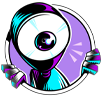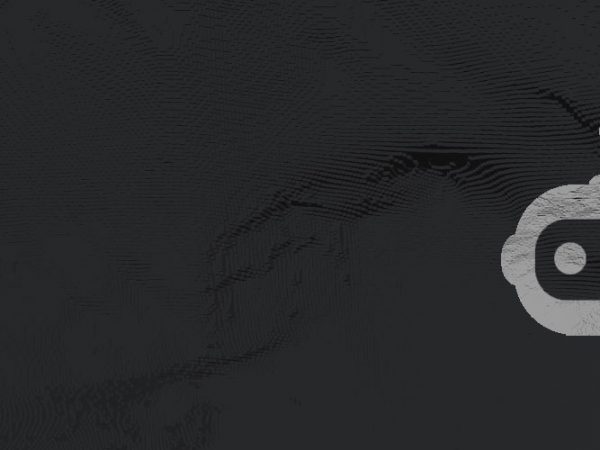If you’re new to Twitch, then reading chat or trying to understand what’s even going on as walls of emotes scroll by your screen can be quite challenging.
Memes, references, and inside jokes built up over the years in certain streamers communities might take a lot of time to research on your own.
To help you bypass the risk of being called out as a Boomer in Twitch chat, we’ve prepared this quick guide on the culture of Twitch emotes to bring you up to speed and explain the meanings of the most popular emotes that circulate on Twitch.
What Are Twitch Emotes?
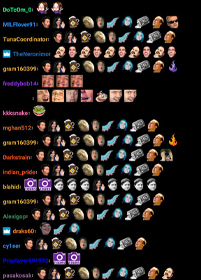 The word emote is the shortened variant of the word emoticon, which in turn is a portmanteau of “emotion” and “icon”. Traditionally, emotes are very simple, minimalist graphical depictions of different emotions, used in written digital communication.
The word emote is the shortened variant of the word emoticon, which in turn is a portmanteau of “emotion” and “icon”. Traditionally, emotes are very simple, minimalist graphical depictions of different emotions, used in written digital communication.
On Twitch, however, the majority of the emotes are images of real people, different characters, or objects (edited, or presented in their original forms).
Back in the days of Justin.tv, there was a joke tradition inside the dev team to include their faces as emotes on the website. The tradition continued with the full-fledged launch of Twitch, and that’s how the original Twitch emotes came to be, some of which became the first Global Twitch Emotes.
As Twitch’s popularity grew, the emotes quickly became the defining feature of the chat. Expressing excitement, sadness, confusion, anything through emotes is what defines Twitch chat. The emotes have either deep personal history, ties to the different aspects of Internet culture or sometimes they are just memes.
It’s important to mention that not all of the emotes come from the same source, or are immediately available to the viewer at first. The 3 main emote sources are Global Twitch Emotes, Subscriber Emotes, and emotes enabled by 3rd party extensions such as BetterTTV and FrankerFaceZ.
Global Twitch Emotes
These are the emotes that are native to Twitch and they are immediately available to the viewer. They can be used in any streamer’s chat and are free of charge.
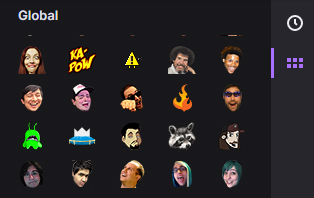
For example Kappa, LUL and HeyGuys are some of the most popular Global Emotes.
Subscriber Emotes
When a streamer joins the Twitch Affiliate Program, aside from the main benefits of the program (such as being able to monetize their channel by getting a “Subscribe” button), the streamer can also submit custom Subscriber Emotes, which unlock for the viewer when they subscribe to the channel.
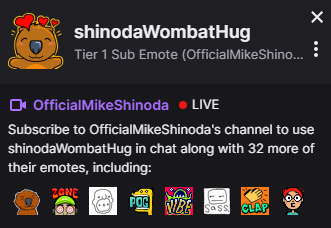
The viewers can use any subscriber emotes they unlocked on other channels. Subscriber emotes can be anything the streamer wants, if they follow the official guidelines. Additionally, subscriber emotes can be tiered, as the viewer gets higher subscription tiers, they can unlock more emotes that the streamer set up.
3rd Party Extensions (BTTV & FFZ)
If you have seen the chat spam “KEKW” or “MonkaS” and have no idea what on earth that’s supposed to mean, then you are missing the BetterTTV and FrankerFacez extensions.
You can install the BetterTTV extension on your browser, link your Twitch account, and those seemingly meaningless word jumbles in the chat will change to their corresponding emotes.
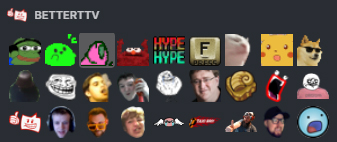
The idea behind FrankerFaceZ is basically the same, but currently, the official extensions have been removed from Chrome and other browsers, besides Mozilla Firefox.
To install a User Script version, you can follow the official FFZ instructions by clicking the download button at the bottom of the page. The objective of these 3rd party extensions is to have an extensive custom library of global emotes.
Streamers can add emotes to their channels from the already enormous libraries that exist on both of the platforms (or upload their own emotes) to make them available for their chats. The most popular examples of third-party emotes are MonkaS, catJAM, and KEKW.
Understanding the Most Popular Twitch Emotes
Here is a crash course on the most popular Twitch emotes, to help you understand their origins, meaning, and general usage:
1. Kappa

Kappa came to be as part of the internal tradition at Justin.tv. Just like the other employees, Twitch chat engineer Josh DeSeno’s face was included as an emote, and the smug smile he exhibits in the picture is what made the emote so popular.
DeSeno’s fascination with Japanese culture and mythology lead to the emote being named after a particular type of turtle-like demon in Japanese folklore, called Kappa.
The emote has basically the same connotation as the popular rage comic meme image, Trollface, i.e. to depict sarcasm, trolling, or just joking around. Kappa is widely used in the chat, usually after a sentence or a phrase, to indicate that the message is a troll or a joke.
The emote’s daily usage averages around 1,000,000.
2. PogChamp

The original PogChamp emote depicts the excited face of an Internet personality, Ryan “Gootecks” Gutierrez. The image is taken from a blooper reel video uploaded on YouTube by Cross Counter TV on November 27th, 2010.
The exact expression shown on the emote happens at around the 2:09 mark on the video. Subsequently, Ryan’s face was posted on 4chan’s gaming boards as a meme in 2011, and that’s when the ridiculous fame and popularity the emote has today started garnering.
Gootecks was already a popular streamer at the time, and his famous excited face was added to Twitch by the staff as a global emote.
Over the years the emote became even more popular, but following a controversial tweet Ryan made in support of the 2021 United States Capitol attack, on January 6th, 2021 Twitch decided to remove the PogChamp emote and work with the community to design a new emote in order to depict the “sentiment of Pog”.
After that Twitch incorporated a system that changed the emote to something new every 24 hours. This lasted until February 12th of the same year, when on an official Twitch stream the community voted for a permanent replacement of the PogChamp emote.
On February 13th, 2021, Twitch announced that KomodoHype, a global Twitch emote, will be permanently replacing Gutierrez’s face as the new PogChamp emote.
Due to the exaggerated expression of excitement that Gootecks has on the emote, PogChamp quickly became the go-to emote used to express excitement and hype when the streamer makes an amazing play, beats a difficult level or a highly anticipated moment occurs.
It’s difficult to discern the exact number of daily usage of the original PogChamp, but the komodo dragon variant’s usage averages around 700,000 – 1,000,000 daily.
3. POGGERS
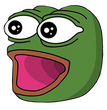
POGGERS features the infamous comic character Pepe The Frog with an open mouth and bulging wide eyes, akin to the original PogChamp. The character itself was created as part of a comic called “Boy’s Club”, drawn by Matt Furie in 2005.
Since then, the heavily politicized frog has become an incredibly popular meme on 4chan, Myspace, and Gaia Online. Alongside the myriad memes that Pepe was featured in, hundreds of emotes exist on both BetterTTV and FrankerFaceZ depicting Pepe The Frog in different scenarios with different expressions.
Unlike the previously mentioned emotes, POGGERS is not a native Twitch emote, rather it was first submitted to BetterTTV on February 23rd, 2017 by user “tO_Ot”. The emote appeared on FrankerFacez, courtesy of user Klotzi, on September 24th, 2017.
POGGERS as an emote is quite popular, as it was added to 272,521 channels using BTTV and 111,788 channels using FFZ.
The emote’s meaning is pretty similar to PogChamp, as it is used to express immense excitement for the hypest moments during the stream. When your favorite streamers successfully clutches a play, you can join the chat in spamming POGGERS.
4. 4Head

The 4Head emote features the head of League of Legends streamer Cadburry. He has kind of a weary, uncomfortable smile in the picture, that’s why the emote is usually used as a reaction to a cheesy joke, or someone laughing hysterically.
The origin of the emote is unclear, but sources suggest that it’s a screenshot made during Cadburry’s stream sometime in 2015. The emote was first added to FrankerFaceZ on September 11th, 2016 by user dechiplaysgames. Later, 4head was added to Twitch as a global emote
The usage of the emote varies. Depending on the context, it can either be a genuine reaction to a joke, or a sarcastic smile to something cheesy.
Another noted usage is to express the sentiment of “smiling approvingly” when the streamer bursts into hysterical laughter.
5. 5Head

5Head uses the same image as 4Head, but on this one, Cadburry’s forehead is comically enlarged to indicate a “big brain”. The implication is similar to the famous Markiplier meme “Yeah, This Is Big Brain Time”.
The emote was uploaded to FrankerFaceZ on March 14th, 2018 by user SublimedTV. At first, 5Head didn’t see much usage, but it became increasingly popular after xQc’s chat started using it as a reaction to either his super-smart or ridiculously dumb plays.
Because of the ambiguity in the meaning, you can use 5Head in radically different scenarios. For example, it can be used when the streamer pulls off a strategy so intricate that it requires a lengthy explanation, or the complete opposite when the streamer misses an obvious solution and fails spectacularly.
6. LUL
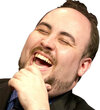
One of the most popular global emotes on Twitch, which boasts daily usage of 3,000,000 on average, LUL’s implication is very simple – laughter. The emote itself features the famous video game reviewer John Bain, known as TotalBiscuit, laughing with his hand stroking his chin.
The emote is taken from a photograph that was uploaded to Flickr in 2013, and a year after John started using it as a subscriber emote on his Twitch with the keyword cynicalLaugh.
Unfortunately, the original photographer filed a DMCA takedown, and Bain was forced to take the emote down. However, in 2016, the emote was uploaded to BetterTTV with the keyword LUL, and shortly after in 2017, Twitch added LUL as a global emote, albeit the original photo was slightly altered to avoid any additional copyright claims.
As the name of the emote suggests, LUL is an alteration of LOL, so the usage of the emote is akin to typing LOL. You can use the emote in any scenario when genuine laughter is due.
7. OMEGALUL
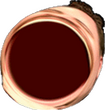
A variation of LUL, OMEGALUL is an exaggerated stretch of John “TotalBiscuit” Bain’s face. The stretch is done in such a way that his gaping mouth takes up most of the space on the image.
At first, OMEGALUL was submitted to Twitch by TotalBiscuit himself as a subscriber emote, and it was uploaded to FFZ as well, but it didn’t gain much traction at the time.
Unfortunately, John passed away after a long, arduous fight with cancer on May 24th, 2018, and that’s when the emote’s usage exponentially increased as the Internet grieved John’s passing.
OMEGALUL’s usage is similar to LUL, but in this one’s case, it’s used to convey an extreme degree of laughter, hence the word “omega”.
8. KEKW
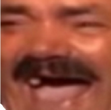
The KEKW emote features a zoom-in on a laughing face that belongs to a Spanish comedian Juan Joya Borja, known by his stage name “El Risitas”.
The screenshot is taken from an interview shot in 2007 (skip to 4:40 for the face in question), where Risitas tells an incoherent story about his time collecting the paella pans from the beach, and bursts out into hysterical, wheezing laughter. It’s unclear when, but his laughter became an extremely popular meme, used in myriads of meme videos.
KEKW was first uploaded to FrankerFaceZ on August 21st, 2019 by user Keesual and since then it has been used in 119,894 sets. On April 19th, 2020, the emote was uploaded to BetterTTV and was used on 255,604 channels.
Because of its meme status, the emote rapidly caught on and gained widespread popularity.
KEKW is another emote that is used to indicate extreme laughter, akin to the phrase LMAO (laughing my ass off). When something on the stream makes you laugh, be it the streamer, or someone in the chat, you can use KEKW to express your laughter.
9. Kreygasm

The Kreygasm emote features the moaning face of the famous streamer Kreyg. The name of the emote is a portmanteau of the words Kreyg and orgasm. As the name suggests, it indicates a moment of extreme satisfaction.
It’s a global Twitch emote, and it serves as the basis for the other gasm-style emotes, as in emotes imitating this specific emote are allowed, when other explicitly sexual emotes are prohibited (for example extreme cases of ahegao faces).
Justin.tv employee Hassan Bokhari tweeted at Kreyg in 2014, about the fact that Kreyg submitted a photo of his “Kreygasm” face to be used as a global emote on Twitch. According to an email sent to Know Your Meme, Kreyg approached Twitch staff in March of 2011 to have his face used as an emote on Twitch.
Later that year, during one of his streams, he coined the term “kreygasm” and subsequently took a photo of himself making a moaning expression. Twitch added Kreyg’s face with the keyword Kreygasm as a twitch emote in September of 2011.
Since the face on the emote portrays a moaning expression, it’s mainly used to express excessive satisfaction at something the streamer did.
10. Jebaited
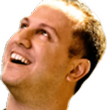
Jebaited is an emote of Community Effort Orlando Gaming founder Alex Jebailey, looking up and smiling. It was added as a global Twitch emote in September 2016.
The keyword of the emote quickly became synonymous with “tricked” in pop culture, as the emote is used to show that someone was deceived, or tricked by something.
The image used in the emote is taken from a video featuring Alex watching a Street Fighter V match on the big screen during CEO 2016. Alex Jebailey was already a prominent figure in the gaming community when Twitch staff decided to add his face as an emote, but it’s unclear why that specific keyword was used.
The emote caught up quickly, just like the other global emotes. In October 2016, a very popular streamer and a YouTuber, AdmiralBulldog uploaded a video with Jebaited on the thumbnail.
Shortly after, a post was made in r/OutOfTheLoop, where the meaning behind the emote was explained, and that cemented the popularity of the emote.
The emote is used after the chat tricks the streamer into triggering a trap in a game – the streamer gets angry, and the chat explodes into Jebaited spam.
11. Pepega
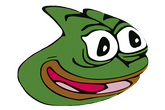
Yet another emote featuring the infamous and politicized cartoon frog Pepe. On this one, Pepe is seen with a distorted smiling face, with weird protrusions that look like horns.
Pepega was created on April 8th, 2018, when user Adew posted the emote along with the word “:pepega”.
According to Adew, the naming was a typo, and that’s how this Frankenstein’s monster came to be. Adew added the emote to FrankerFaceZ and BetterTTV on the same day, and it slowly started gaining popularity.
Pepega existed in a meaningless limbo for a while, until September of 2018, when Forsen added the emote to his collection. His fans didn’t like the emote so much that they started to spam it a lot during Forsen’s streams to show disdain for it and call the emote stupid.
This caused Pepega to become an emote for calling something, or someone stupid.
You can use Pepega if you want to call out the fact that the streamer or someone in the chat is doing something stupid, akin to the meme phrase “small brain”.
12. TriHard

One of the most popular global Twitch emotes, with daily usage of a whopping 5,000,000, TriHard features famous streamer TriHex’s smiling and excited face.
The emote is a capture from a photo of TriHex holding a Dragon Ball wall scroll. The photo was taken at the 2012 Akon anime convention in Dallas, Texas. As described by TriHex himself during a Kotaku interview, the name of the emote actually came from TriHex’s speedrun of Yoshi’s Island during AGDQ (Awesome Games Done Quick) 2014.
Yoshi’s Island is famous for being incredibly demanding as a speedrun and TriHex was doing the 100% run to boot. The run itself was crazy as well – a shirtless incentive was met, TriHex had to take off his shirt and the staff was forced to attach the microphone to his afro, all of this while he was performing the “sweaty” speedrun of Yoshi’s Island.
TriHard is another emote used to express unadulterated joy and excitement, because of TriHex’s sheer happiness in the photo.
13. catJAM
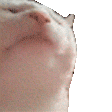
A very popular animated BetterTTV emote, catJAM features a zoom-in on a white cat’s head, bopping rhythmically, hence the connotation of jamming while listening to a particularly good track.
The emote originated from a meme that was started by a TikTok uploaded on April 15th, 2020. As the hundreds of meme videos started pouring in and the feline became famous as the Vibing Cat, user MadLittleCat uploaded the emote to BetterTTV. Since then, the emote has been added to 425,304 channels.
catJAM’s usage is generally a reaction to the music playing on stream. Whether it’s the in-game soundtrack, or the music playing on stream, you can use the emote to indicate that you are jamming to it.
14. monkaS
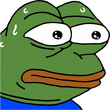
Pepe The Frog makes another appearance on this emote. He has a scared, stressed expression and is profusely sweating. Just like the other emotes featuring Pepe, monkaS is a third-party extension emote as well.
Pepe’s scared expression, weirdly enough, first appeared on /lit/, 4chan’s literature board, in 2011. For a long while, scared Pepe didn’t make a comeback, until on March 17th, 2016 user Monkasen (a.k.a. MonkaSenpai) uploaded the emote to BetterTTV, and since then the emote has been added to 428,472 channels. The “S” in the emote actually means “scared”.
monkaS is generally used during tense, scary, stressful situations. When something on stream is about to go wrong or is already going wrong – something scary is happening, the chat starts spamming monkaS.
15. Sadge
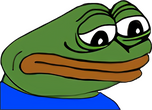
Sadge is another cameo by the famous meme frog, Pepe. On this one, Pepe’s head is flattened and he has a deflated sad look. As an emote, it first appeared on BetterTTV on January 4th, 2020, and a few days later on the 9th was uploaded to FrankerFaceZ as well. The increased usage of the emote can be traced to Forsen and his chat yet again.
When the emote started circulating on the Internet after being added to BTTV, Forsen’s and AdmiralBulldog’s fans were the ones responsible for actively using and popularizing it. Particularly, a copypasta that appeared in Forsen’s chat and subsequently in r/forsen cemented the popularity of the emote.
When the streamer fails to beat a level, loses a match, or they tell a sad story, cancel a stream, chat usually uses the emote, or just the word “Sadge” to express their sadness and disappointment.
Emote Variations
With all that said, a huge amount of the emotes have different variations. Depending on context, different variations of the emotes can be used.
For example multiple versions of the Kappa emote exists natively on Twitch. But for instance KappaPride’s usage differs from the usual sarcastic Kappa, as the rainbow colored emote is used to call out, or confirm association with LGBTQ+.

Several other examples with less drastic changes in contextual load include PogChamp, PogU and POGGERS. All 3 of them have the same meaning and usage, but visually they differ in the sense that PogU is a frontal look on Gootecks’ face, and POGGERS is actually the well-known PogChamp, but instead of a human face, it features Pepe The Frog.
Speaking of Pepe, an incredible amount of custom BTTV and FFZ emotes use his likeness as the basis for emotes such as pepeD, Copium, PepeHands, pepeJAM and etc.
